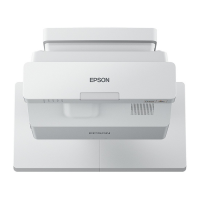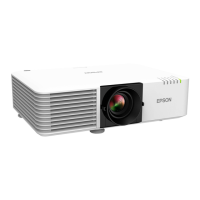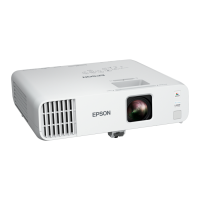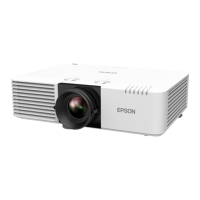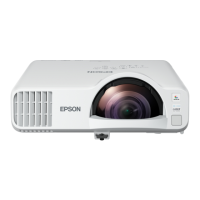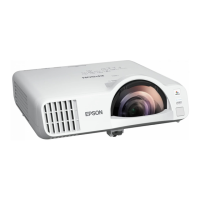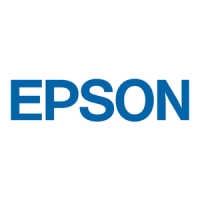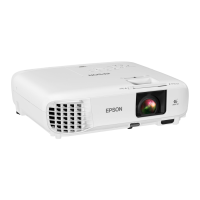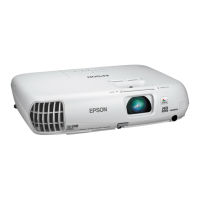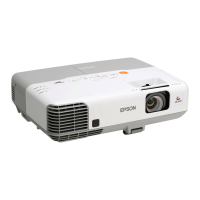Do you have a question about the Epson PowerLite EB-800F and is the answer not in the manual?
Describes the special features of the PowerLite EB-800F/805F projectors, including resolution and connectivity.
Illustrates and identifies the various physical parts of the projector, including front, top, interface, and base components.
Explains the meaning of warnings, cautions, notes, and tips used throughout the user manual.
Considerations for selecting an optimal location for the projector, including ventilation and mounting.
Detailed instructions for connecting the projector to various input sources like computers, video devices, and USB devices.
Step-by-step instructions for inserting and replacing batteries in the projector's remote control.
Instructions for setting up and projecting content through a wired Ethernet network connection.
Guidance on setting up wireless projection using a LAN or optional wireless module.
Accessing and controlling projector settings and functions remotely via a compatible web browser.
Step-by-step instructions for correctly powering on the projector before connecting equipment.
Adjusting the projected image shape for optimal display quality by correcting geometric distortions.
Detailed steps for adjusting the projector's focus to achieve a sharp and clear projected image.
Explanation of different projection modes (Front, Rear, Upside Down) for adapting to installation.
How to select and adjust different color modes for optimal image appearance in various environments.
Instructions on using zoom features to magnify specific parts of the projected image.
Guidance on setting up and projecting from two or more projectors to create a single large image.
Setting up security features like passwords and button locks to prevent unauthorized use.
How to navigate the projector's menu system to access and adjust various settings.
Adjusting image quality parameters such as brightness, contrast, color saturation, and sharpness.
Customizing input signal settings, including format, overscan, and HDMI output intensity.
Configuring projector settings based on installation environment, such as fixed installation and projection modes.
General guidance on routine maintenance tasks to keep the projector in optimal working condition.
Procedures for cleaning and maintaining the projector's air filter and vents to ensure proper ventilation.
Instructions on how to update the projector's firmware using a USB storage device or computer.
General troubleshooting advice for common projector operational issues and basic problem-solving steps.
Explanation of projector status lights and their corresponding meanings and solutions.
Troubleshooting steps for common issues related to projected images and audio output.
Solutions for common issues encountered when using the projector on a network.
Provides overall technical details about the projector's display, resolution, brightness, and contrast.
Lists compatible video display formats, refresh rates, and resolutions for optimal image display.
Crucial safety precautions for setting up and using the projector to prevent injury or damage.
Specific safety guidelines and warnings related to the projector's laser light source.
Regulatory compliance statement for the projector according to FCC rules for digital devices.
| Contrast Ratio | 2, 500, 000:1 |
|---|---|
| Projection Technology | 3LCD |
| Lens Shift | Vertical: ±60%, Horizontal: ±24% |
| Speaker | 16W |
| Connectivity | HDMI, VGA, USB, RS-232C |
| Light Source Life | 20, 000 hours |
| Keystone Correction | Vertical: ±30 degrees, Horizontal: ±30 degrees |
| Input | HDMI, VGA, USB |
| Output | Audio Out |
| Wireless | Optional |
| Lamp Life | Up to 5000 hours (Normal mode), Up to 10000 hours (Eco mode) |
| Resolution | 1920 x 1200 |
